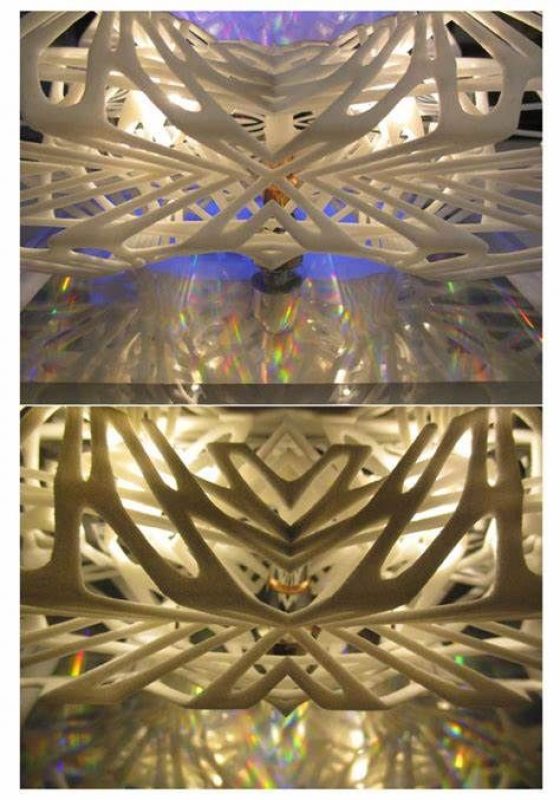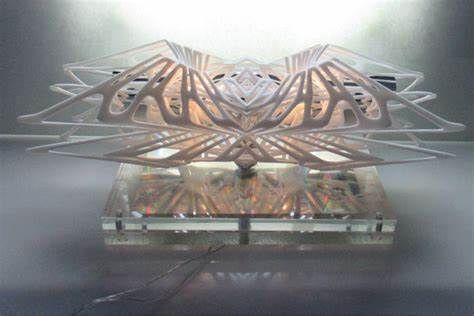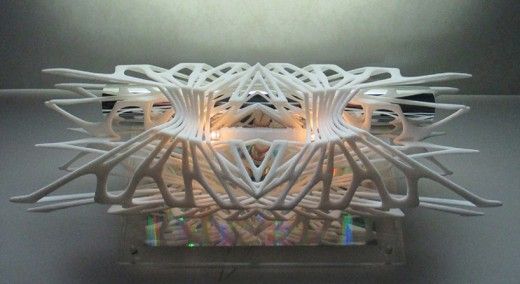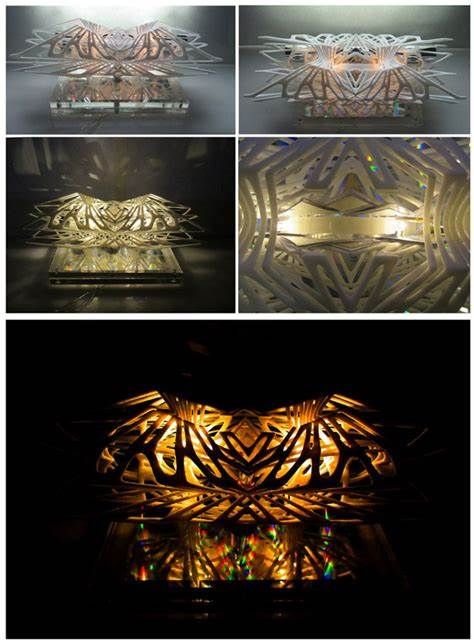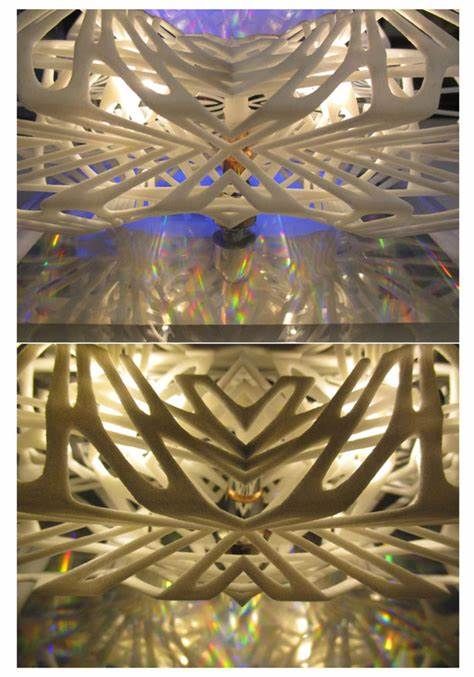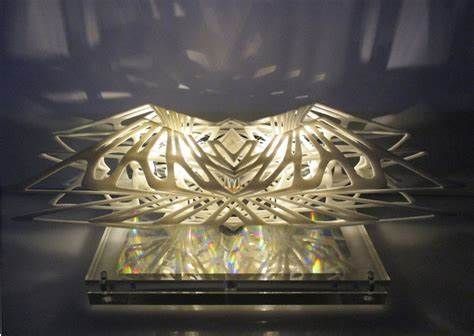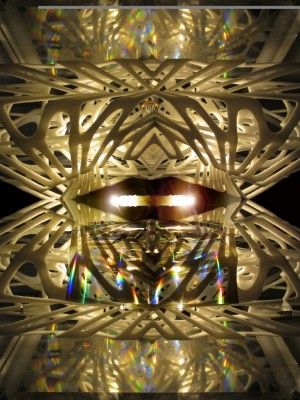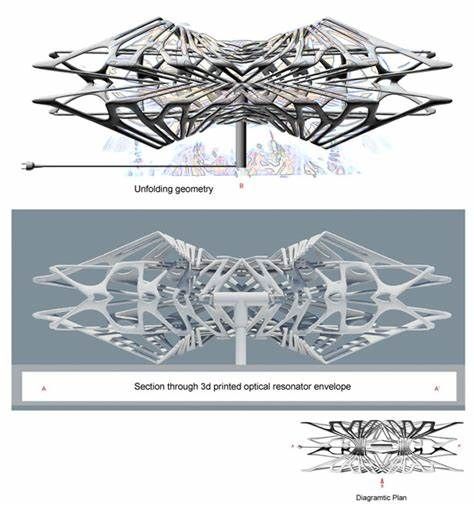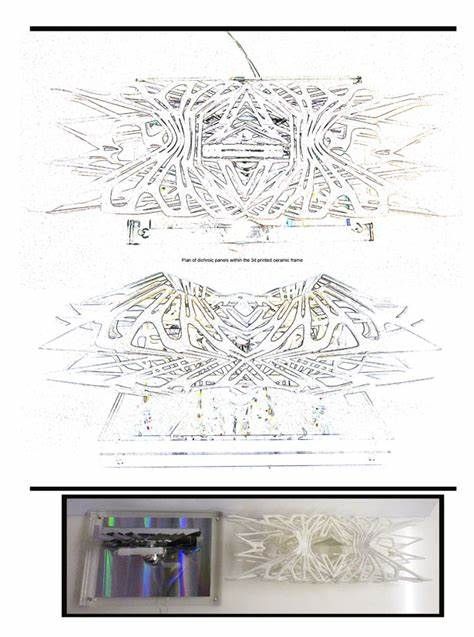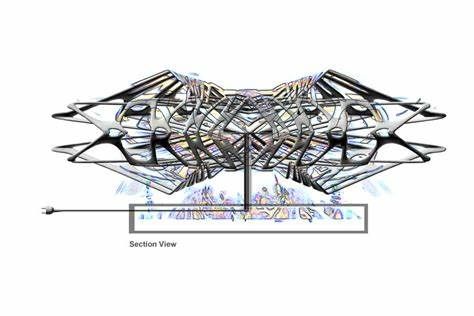Dichroic LED concentrator light
The light’s frame is printed in ceramic, the inner network of chambers hold the LED’S, directing and choreographing light through the entire structure, a repeated geometry rotates around the LEDs with a series of suspended dichroic mirrored squares positioned in the geometry openings, these can be reconfigured in order to change the quality of the emitted light and the illusion of its intensity. The 3d printed ceramic external frame unfolds like a lantern revealing its a light source to alter the light’s character and form as necessary, sections pivot from the mainframe creating a dynamic envelope and shadows once illuminated. The light’s geometry gives it a sculptural feel when not used. The light can also be printed from recycled polymers, currently working on using re-cycled post-consumer waste plastics including synthetic polymer packaging like take-away food containers as well as 3d printer offcuts. Household mirrors are never 100% reflective, the concentrator light’s design uses dichroic mirrors which have 99.98% reflectivity. Dichroic mirrors can reflect light 1000 times before escaping the mirrored envelope so the illusion of light intensity within the 3d printed envelope can be up to 1000 times higher compared to a lamp without mirrors, however, the energy conservation remains the same, it is not altered as new photons are not created, the existing light is intensified within the area of the 3d printed envelope, concave mirrors are used to trap and reflect light more effectively, holographic and dichroic filtered elements are positioned within the cross-section of the 3d printed structure, these create a series of surreal reflections and light intensity. The dichroic LED concentrator light is a type of optical resonator similar to that of a laser pulse trapped between two parallel mirrors. There appears to be more light as it is reflected rather than absorbed by for example wallpaper, furniture, etc. instead the dichroic light gives the illusion of more light because we are wasting less of it and creating a more efficient environment from which to emit the light from.